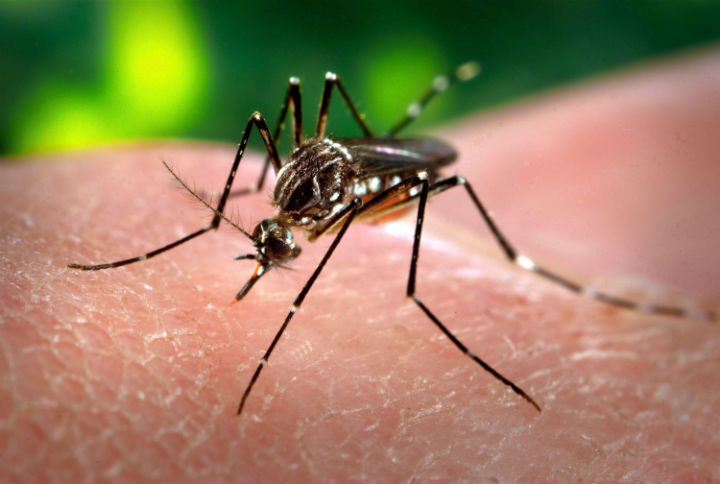Island-hopping tourists have helped spread a mosquito-borne virus throughout the Caribbean in recent months, and could eventually transport it to areas of North and South America.

There are new concerns the chikungunya virus could be introduced to Brazil, by the throngs of soccer fans travelling from around the globe for the FIFA World Cup this coming June.
Since showing up on the French island colony of St. Martin last year — the first appearance in the western hemisphere — there have been nearly 26,000 reported cases in the region.
READ MORE: Canadian travellers to St. Martin, Martinique warned about chikungunya virus (Dec. 24)
The most recent warnings about the outbreak are in the Dominican Republic, where there have been more than 700 cases reported.
An article in the latest edition of the American Society for Microbiology’s Journal of Virology suggests there’s a risk of a “catastrophic” epidemic, arising from the more than half a million foreign visitors Brazil expects to land in the country for the month-long soccer tournament.
The U.S. Centre for Disease Control (CDC) has been anticipating chikungunya to arrive in the Americas and scientists are now closely monitoring where it goes next.
- Canadian man dies during Texas Ironman event. His widow wants answers as to why
- Invasive strep: ‘Don’t wait’ to seek care, N.S. woman warns on long road to recovery
- ‘Super lice’ are becoming more resistant to chemical shampoos. What to use instead
- Canadians more likely to eat food past best-before date. What are the risks?
She said the CDC expects that travellers could possibly bring the virus to the United States or other countries in the Americas, as tourists travel to and from infected areas.
The virus is generally not deadly, but it causes fever and severe joint pain: the name chikungunya, which comes from Tanzania’s Kimakonde language, means “to become contorted.” It can also bring about flu-like symptoms and headaches.
Some patients can have prolonged problems and, in some cases, experience eye, neurological or heart complications.
There’s no vaccine or cure: it’s a virus you just have to ride out until the symptoms go away — after a few days or weeks. But once you get infected you, become immune to the virus, Staples said.
Brazil has been preparing for the arrival of chikungunya in the country for a number of years, as it had already documented cases in travellers returning home. The CDC itself put out guidelines for preparedness in 2011 for the expected arrival of the virus.
“Depending on who’s attending the World Cup, where they’re coming from, that’s all going to influence the potential risk,” Staples said.
Brazil estimates 600,000 foreign spectators will visit the country during the month-long championship, with teams from 32 countries (including Brazil) participating.
Staples said it’s a “constantly evolving situation” and it’s hard to predict what the extent of the outbreak will be in June, when the World Cup gets underway.
Chikungunya can be carried by two types of mosquitoes: the Aedes aegypti, which can be found from the southern U.S. to Brazil, and Aedes albopictus, which can be found in areas as far north as New Jersey.
Both types of mosquito also transmit dengue fever.
The Aedes aegypti mosquito is the one that appears to be passing chikungunya, Staples explained. She added scientists aren’t quite sure how well the Aedes albopictus can pick up or transmit the virus, but the mosquito can be found in more temperate regions.
Staples notes that Brazil — as well as Canada and the United States — have previously documented cases of chikungunya in travellers returning from other areas. But so far, none of those cases have contributed to an outbreak.
Prior to the western hemisphere outbreak, chikungunya was found in Africa, Asia and on islands in the Indian Ocean and western Pacific.
The World Health Organization said the virus has reached epidemic proportions since 2004, as it spread into new areas, including Europe.
Staples said that, like dengue, mosquitoes pick up the virus from humans and transmit it to others. She said “prevention is going to be key.”
Health authorities, including the Public Health Agency of Canada, are warning travellers to chikungunya-affected areas to take general precautions by covering up and using mosquito repellents.






Comments